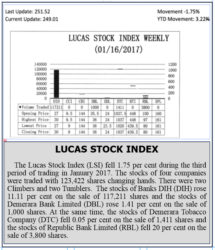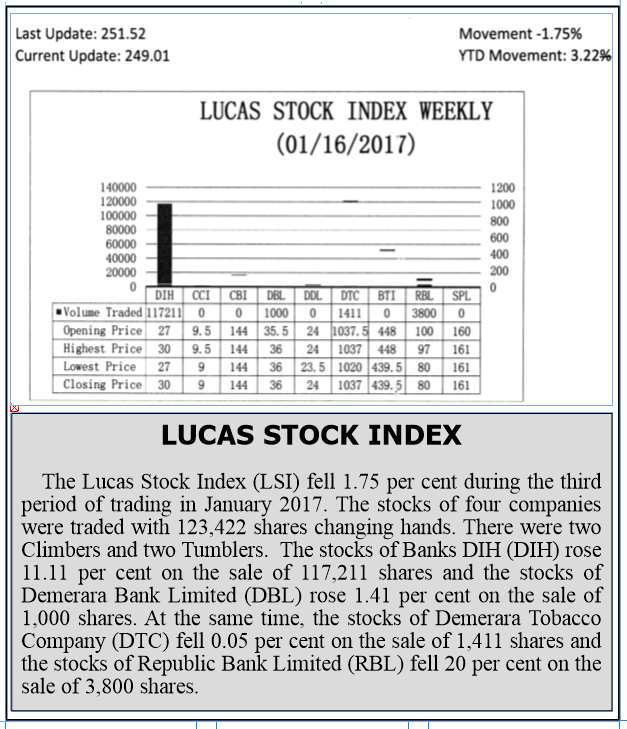Some 17 years ago, ExxonMobil and Guyana signed an agreement for the former to explore for oil in the territorial waters of Guyana. Very few Guyanese might have heard about the event and even fewer might have paid it any mind. After all those old enough to know had heard similar stories before and thought that there was very little to look forward to.
Not many Guyanese knew what Exxon was doing since signing the lease to the exploration block that it was given, for it was not until March 2015, 16 years later, that news reached many Guyanese that Exxon would start drilling for oil. By that time, Exxon had gone from Venezuela where it used to do business before having its estimated 41 per cent share of a joint investment taken away by that country.
Exxon was a household name in many parts of the world and now it rolls off the tongue of Guyanese far more frequently and with noticeable pleasure than it did in the past. Exxon has made a discovery of oil in two fields in the exploration block that it was given many years ago.
Given what those discoveries mean for the economic prospects of Guyana, it is perhaps essential for Guyanese to get to know some more about the company and its business that have transformed its name into an attraction for investors and worldwide business news. This article seeks to provide that information. The writer will use the abbreviated name Exxon or the long name ExxonMobil interchangeably throughout the article.
Giant corporation
ExxonMobil is a giant corporation that is headquartered in the USA and has operations in most other countries in the world. It has exploration or production operations in about 50 countries on six continents and does various types of business in nearly 200 countries. The ExxonMobil that Guyanese know today was born out of a merger between Exxon and Mobil corporations in 1998, one year before venturing into the Guyana market. The two corporations could be treated as twins since they were the consequence of the same structural and identity changes that took place in the oil industry in America in 1911. They emerged under different identities out of the dismantling of the Standard Oil Trust Company which was formed in 1882 in the State of New Jersey.
The dismantling of Standard Oil Trust in 1911 led to the formation of 34 independent oil companies, one of which was Jersey Standard. Jersey Standard eventually changed its name in 1972 to Exxon. The other was Socony which eventually changed its name in 1966 to Mobil Oil Corporation. Today, ExxonMobil identifies itself as being born in 1882 in New Jersey, using the birthdate of the parent company Standard Oil Trust. As one might imagine, Exxon does not have an entirely proud history, but has managed to overcome its negative image to remain a major player in the oil industry. It controls its worldwide operations from two locations in the USA, Irving, Texas and Fairfax, Virginia.
Complex capital structure
 The modern-day ExxonMobil has authority to issue 9.2 billion shares. Nine billion of the shares can be issued as common stock while the 200 million are issued as preferred shares. Under those circumstances, Exxon would be considered as having a complex capital structure. In excess of 8 billion common shares were issued by 2015. In its latest available report, Exxon has assets of US$337 billion and equity of its own of US$170.1 billion. The revenue of the organization in 2015 was US$269 billion. This was down 35 per cent from 2014 and 39 per cent from 2013. Despite the decline, the revenues of ExxonMobil were nearly 100 times the size of Guyana’s economy.
The modern-day ExxonMobil has authority to issue 9.2 billion shares. Nine billion of the shares can be issued as common stock while the 200 million are issued as preferred shares. Under those circumstances, Exxon would be considered as having a complex capital structure. In excess of 8 billion common shares were issued by 2015. In its latest available report, Exxon has assets of US$337 billion and equity of its own of US$170.1 billion. The revenue of the organization in 2015 was US$269 billion. This was down 35 per cent from 2014 and 39 per cent from 2013. Despite the decline, the revenues of ExxonMobil were nearly 100 times the size of Guyana’s economy.
The profits of the company before taxes were down 58 per cent in 2015 compared to 2014 and by 62 per cent when compared to 2013. One can therefore expect the contribution of oil to the Guyana economy to have a major impact on economic and financial activities. Exxon employs about 73,500 persons across its various enterprises. The number does not include persons who work in what Exxon describes as company-operated retail sites.
Like other industries, the oil industry is a complex one. There are continuous changes in the ownership and relationship between companies. The connection between various companies is sometimes maintained or broken when mergers and acquisitions take place. ExxonMobil stands as the leading company in the oil and petrochemical industry today. It has hundreds of affiliates which use one of the following names ExxonMobil, Exxon, Mobil, Esso or XTO. Each of these companies has relationships with other companies that enable Exxon to either control or exert influence over a wide swathe of entities and activities.
Major affiliates
The major affiliate, Esso, came much later even though the name emerged in 1926 as a trade name for fuel produced by Exxon. Esso is now involved in a variety of activities, but its plays an important role in the exploration activities of ExxonMobil.
It was Esso Exploration and Production Company that led the successful search for oil in Guyana. XTO is another major affiliate of Exxon. It started out as Cross Timbers Oil Company but changed its name in 2001 to XTO and in 2010 merged with Exxon to become part of the Exxon family of companies. This merger gave Exxon additional capacity in the natural gas arena. In addition, in reporting on its activities, Exxon identifies 23 companies that contribute to its operations as equity companies. Equity companies are ones in which Exxon does not have a controlling interest, but does exert influence over their management decisions. While that might be so, several of the companies that might qualify as affiliates or subsidiaries are treated as equity companies by Exxon.
Exxon has several divisions whose activities are captured under four business streams and 14 business lines. The four business divisions are classified as upstream, downstream, chemical and corporate and financing divisions. The upstream activities involve exploration, evaluation, development and production activities.
The downstream activities are in the areas of sales and distribution. The downstream activities involve the transportation of crude oil and gas and the sales of refined products. Where Guyana is concerned, the activities of Exxon are still in the upstream division. ExxonMobil also is a major manufacturer and marketer of commodity petrochemicals such as olefins, polyethylene and polypropylene plastics, aromatics and other specialty products. Some of the business lines of Exxon are aviation fuel and lubricants, passenger vehicle lubricants, industrial lubricants, marine fuel, marine lubricants and commercial vehicle lubricants.
Major concern
As a company involved in the natural resource sector, the major concern for Exxon is what happens in the upstream area since the controlling and reporting of costs are critical to the oil and gas industry.
Much of what a company can do to measure and grow profitability depends on how successful upstream exploration, evaluation, development and production activities are. This is important since successful exploration and production activities enable the company to capitalize more of its costs and the more cost that can be capitalized, the slower current expenses will grow. In its 2015 report, Exxon indicated that it drilled seven exploratory productive wells and five dry wells.
This is in contrast to 11 such productive wells in 2014 and 16 in 2013. It also drilled seven dry wells in 2014 and eight in 2013. Despite the euphoria in Guyana about the oil find, the ratio of productive exploratory wells to dry wells was not a good one for Exxon in 2015 as it was in the previous years of 2014 and 2013.
It should be observed further that the ratio of productive development wells to dry development wells in 2015 was a relatively good one for Exxon in 2015 when compared to 2014. The entity was able to produce 132 productive development wells to each dry development well as against 120 productive development wells in 2014. However, this outcome did not match the performance of 2013 either.
A resource company like Exxon must be able to establish its asset base. This is necessary to help it calculate the amounts by which it has to deplete the assets. As in basic accounting, writing off a depleted asset requires establishing its basic cost. This cost is determined using acquisition, exploration, development and restoration costs. Exxon has to use proven reserves which are in actual production or are supported by formation tests based on either a full cost method or the “successful efforts” method that was developed by the Securities and Exchange Commission. These methods enable Exxon to determine what costs it can capitalize and which ones it has to expense.
Reserves
Though the numbers eventually reach into the financial statements of Exxon, reserve estimates are not made by accountants. They are made by petroleum reservoir engineers or geologists because reserve estimates depend on vast technical information which is usually beyond the ordinary accountant who is unlikely to know about rock formations, and fluids and gases within the reservoir. Accountants might not know too much about the temperature and pressure on the recoverability of the reserves. These variables are not static and the estimates of reserves are revised often over the life of the field. Exxon maintains a global reserve group in order to help it estimate its reserves. This is critical because SEC rules require annual reports on changes in reserve estimates and accurate reporting of proven reserves. While nothing is certain, Guyanese can feel reassured that Exxon might find it hard to cheat them since it would also have to worry about the oversight of the SEC.







